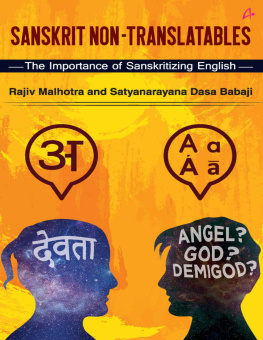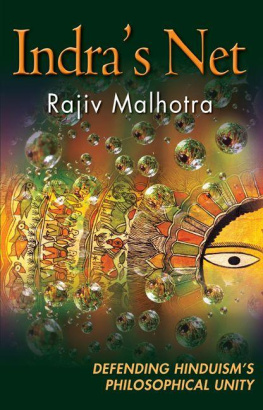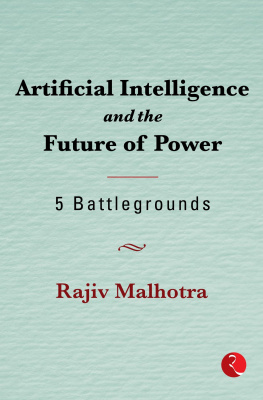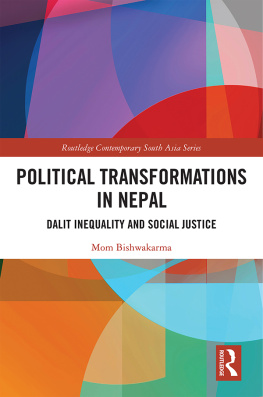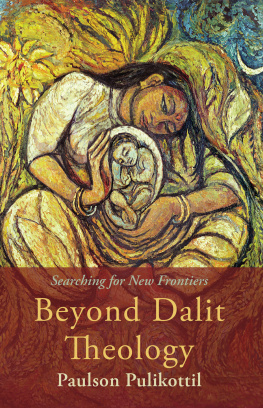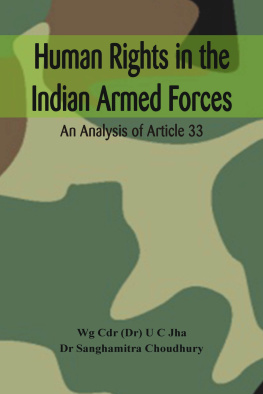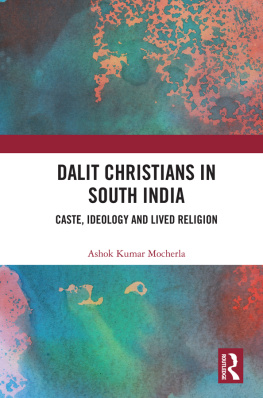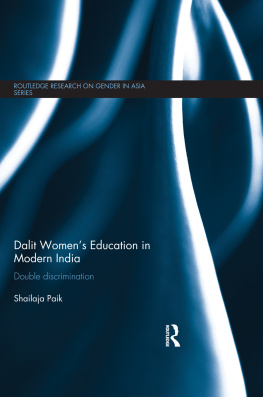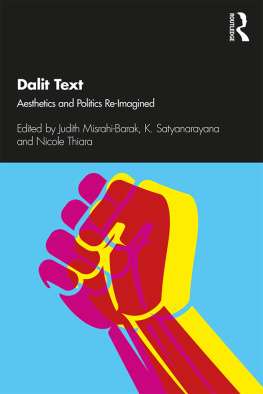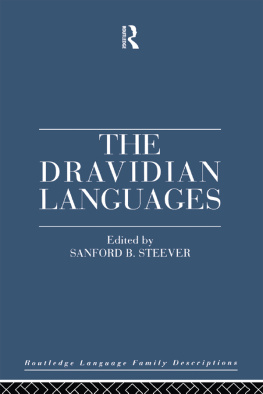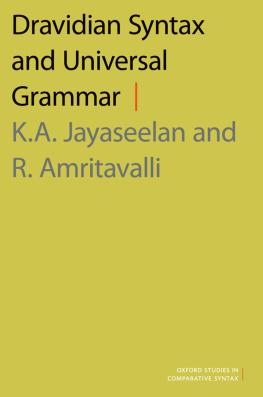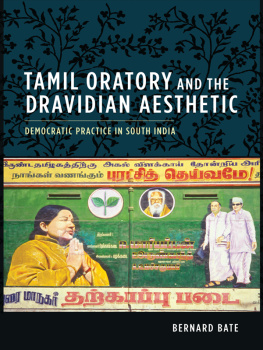
Breaking India
Western Interventions in
Dravidian and Dalit Faultlines
Breaking India
Western Interventions in
Dravidian and Dalit Faultlines
Rajiv Malhotra
Aravindan Neelakandan


Copyright Infinity Foundation 2011
All rights reserved. No part of this book may be used or reproduced, stored in or introduced into a retrieval system, or transmitted, in any form, or by any means, (electronic, mechanical, photocopying, recording or otherwise) without the prior written permission of the Publisher. Any person who does any unauthorised act in relation to this publication may be liable to criminal prosecution and civil claims for damages.
Rajiv Malhotra and Aravindan Neelakandan assert the moral right to be identified as the authors of this work
INFINITY FOUNDATION,
66 Witherspoon Drive, #400,
Princeton, NJ 08542.
Email: Mail@infinityfoundation.com
Web: www.BreakingIndia.com
ISBN: 978-1-937037-00-0
Contents
Introduction
This book has emerged as a result of several experiences that have deeply influenced my research and scholarship over the past decade. In the 1990s, an African-American scholar at Princeton University casually told me that he had returned from a trip to India, where he was working with the 'Afro-Dalit Project'. Upon inquiry, I found that this US-operated and -financed project frames inter-jati/varna interactions and the Dalit movement using American cultural and historical lenses. The Afro-Dalit project purports to paint Dalits as the 'Blacks' of India and non-Dalits as India's 'whites'. The history of American racism, slavery and Black/White relations is thus superimposed onto Indian society. While modern caste structures and inter-relationships have included long periods of prejudice toward Dalits, the Dalit experience bears little resemblance to the African slave experience of America. Taking its cue from the American experience, the Afro-Dalit project attempts to empower Dalits by casting them as victims at the hands of a different race.
Separately, I had been studying and writing about the 'Aryans', as to who they were, and whether the origin of Sanskrit and Vedas was an import by 'invaders' or indigenous to India. In this context, I sponsored numerous archeological, linguistic and historical conferences and book projects, in order to get deeper into the discourse. This led me to research the colonial-era construction of the Dravidian identity, which did not exist prior to the nineteenth century and was fabricated as an identity in opposition to the Aryans. Its survival depends upon belief in the theory of foreign Aryans and their misdeeds.
I had also been researching US church funding of activities in India, such as the popularly advertised campaigns to 'save' poor children by feeding, clothing and educating them. In fact, when I was in my twenties living in the US, I sponsored one such child in South India. However, during trips to India, I often felt that the funds collected were being used not so much for the purposes indicated to sponsors, but for indoctrination and conversion activities.
Additionally, I have been involved in numerous debates in the US with think-tanks, independent scholars, human rights groups and academics, specifically on their treatment of Indian society as a sort of scourge that the west had to 'civilize'. I coined the phrase 'caste, cows and curry' to represent the exotic and sensational portrayals of India's social and economic problems and their interpretation of these as 'human rights' issues.
I decided to track the major organizations involved in promulgating these various theories as well as those spearheading political pressure and eventually the prosecution of India on the grounds of human rights violations. My research included following the money trail by using the provisions of financial disclosure in the US, studying the promotional materials given out by most such organizations, and monitoring their conferences, workshops and publications. I investigated the individuals behind such activities and their institutional affiliations.
What I found out should sound the alarm bell for every Indian concerned about our national integrity. India is the prime target of a huge enterprisea 'network' of organizations, individuals and churchesthat seems intensely devoted to the task of creating a separatist identity, history and even religion, for the vulnerable sections of India. This nexus of players includes not only church groups, government bodies and related organizations, but also private think-tanks and academics. On the surface they appear to be separate and isolated from one another, but in fact, as I argue in this book, their activities are well-coordinated and well-funded from the US and Europe. I was impressed by the degree of interlocking and cooperation among these entities. Their resolutions, position papers and strategies are well-articulated, and beneath the veneer of helping the downtrodden, there seem to be objectives that would be inimical to India's unity and sovereignty.
A few Indians from the communities being 'empowered' were in top positions in these Western organizations, and the whole enterprise was initially conceived, funded and strategically managed by Westerners. However there are now a growing number of Indian individuals and NGOs who have become co-opted by them and that receive funding and mentorship from the West. The south Asian studies in the US and European universities invite many such 'activists' regularly and give them prominence. The same organizations had also been inviting and giving intellectual support to Khalistanis, Kashmir militants, Maoists, and other subversive elements in India. So I began to wonder whether the campaigns to mobilize Dalits, Dravidians and other minorities in India was somehow part of the foreign policy of certain Western countries, if not openly then at least as an option kept in reserve. I am unaware of any other major country in which such large-scale processes prevail without monitoring or concern by the local authorities. No wonder so much has to be spent in India after such a separatist identity gets weaponized into all-out militancy or political fragmentation.
About three years ago, my research and data had become considerable. Moreover, many Indians are simply unaware of the subversive forces at work against their country, and I felt that it ought to be organized for wider dissemination and debate. I started working with Aravindan Neelakandan, based in Tamil Nadu, to complement my foreign data with his access to the ground-reality in India's backwaters.
The book looks at the historical origins of both the Dravidian movement and Dalit identity and the current players involved in shaping these separatist identities. It includes an analysis of the individuals and institutions involved and their motivations, activities and desired endgame. While many are located in the US and the European Union, there are an increasing number in India too, the latter often functioning like the local branch offices of these foreign entities.
One may ask how can innocent research end up in ethnic violence? It has happened in Sri Lanka, where manufactured identities had made the civil society of the island nation go into one of the bloodiest civil wars and had resulted in one of the ugliest ethnic violence in the very backdoor of Indian mainland. It has happened in Africa where it erupted as the worst ethnic genocide ever witnessed by humanity after the Holocaust of the Second World War. And the brutally true answer, to the question which we often try to dodge, is that it has already started happening in India.
Next page

